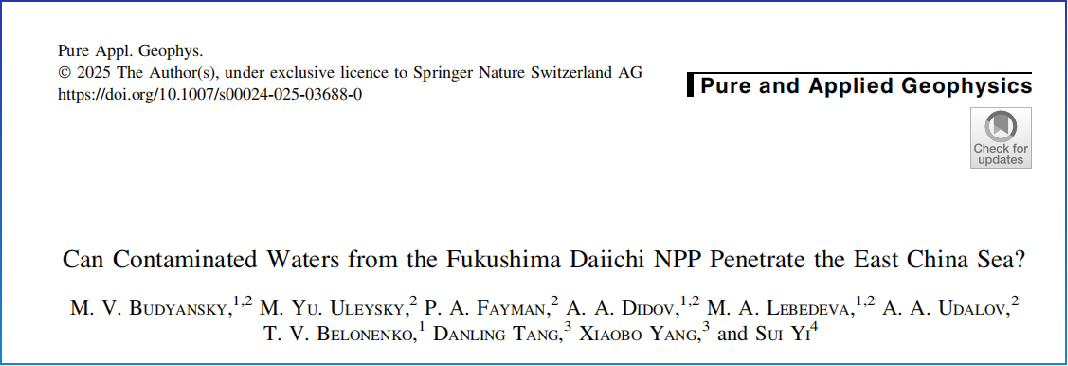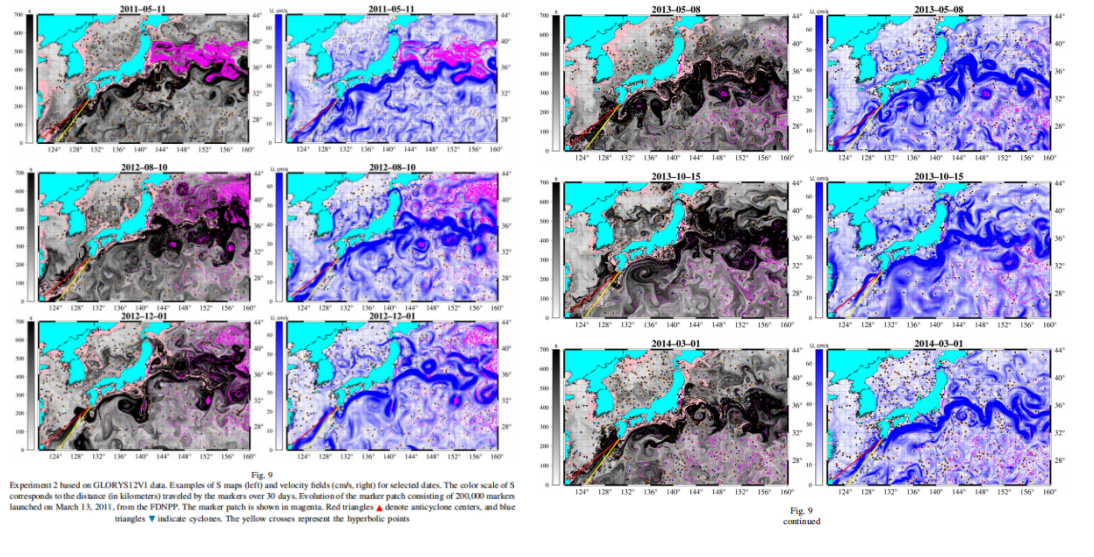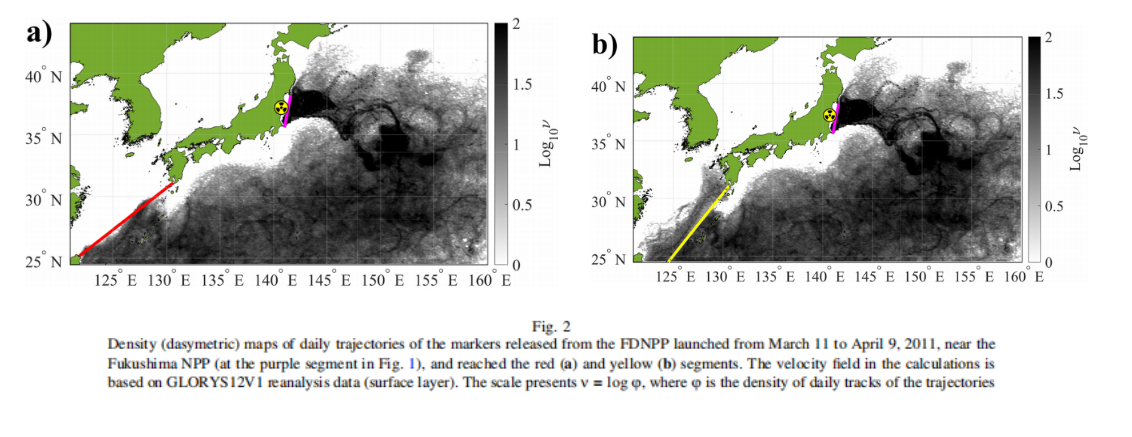Recently, an international research team involving Professor Tang Danling’s team published a groundbreaking study titled "Can Contaminated Waters from the Fukushima Daiichi NPP Penetrate the East China Sea?" in Pure and Applied Geophysics. The study reveals the complex mechanisms by which contaminated water from the Fukushima Daiichi Nuclear Power Plant (FDNPP) may impact the East China Sea cross the Kuroshio Current system. This collaborative research was conducted by Saint Petersburg State University, Southern Marine Science and Engineering (Guangzhou) (GML), , V.I.Il'chev Pacific Oceanological Institute of the Russian Academy of Sciences, and Shenzhen International Graduate School of Tsinghua University.

Key Findings: Mesoscale Eddies Drive Cross-Ocean Transport of Contaminants
Using advanced Lagrangian modeling combined with global high-resolution ocean reanalysis data set (GLORYS12V1), this study investigates the southward transport mechanisms of contaminated waters released from the Fukushima Daiichi Nuclear Power Plant (FDNPP), particularly near the Kuroshio Current regime.
The findings reveal that the Kuroshio Current captures contaminated waters, forming cyclonic rings that detach and drive pollution southwestward. This process is further enhanced by the dissipation of cyclonic eddies, which facilitate the spread of contaminants toward the eastern periphery of the current. Cross-jet advection, resulting from the weakening of the Kuroshio near Taiwan, also contributes to westward transport. Additionally, the influence of East Asian monsoons introduces a 6-month recurrence cycle, sustaining long-term pollutant flux and promoting stable accumulation in the region.
Three key mechanisms are identified for the successful transport of Lagrangian particles from FDNPP to the East China Sea: (1) Cross-Kuroshio jet transport in the Kuroshio Extension, leading by cyclonic ring formation; (2) Southwestward advection of these rings or their generated eddies; (3) Monsoon enhanced cycle, by which the 6-month cycle driven by the East Asian monsoon promotes the continuous accumulation of pollutants in the East China Sea region.

Technical Innovation: Quantification of Eddy-Monsoon Coupling Effects for the first time
The study innovatively integrates mesoscale eddy dynamics with the East Asian monsoon system, identifying the generation and dissipation of cyclonic eddies as the core driver of cross-latitude contaminant transport. By tracking millions of virtual particle trajectories, the team confirmed that the "eddy pumping effect" in the Kuroshio Extension region which leads to the transport of surface contaminants to the depths of 100–500 meters, and also ultimately entering the East China Sea through cross-jet channels.

Ecological Implications: Long-Term Regional Contamination Risks
The study highlights the long-term impacts of contaminated water on fisheries and ecosystems, advocating for international marine monitoring cooperation. It establishes a novel theoretical framework for understanding cross-regime marine radioactive water transport, offering critical insights for regional environmental risk assessment and policy formulation.
The South China Sea U-Team of GML leaded by Professor Danling Tang specializes in marine ecological research and natural disaster forecast, maintaining extensive international collaborations such as US, Canada, Sri Lanka, Russia, etc. Professor Danling Tang and Dr. Xiaobo Yang from Team U are the collaborators of this research project, they contributed to the investigation of monsoon-regulated transport mechanisms of Fukushima contaminants.
This work was supported by grants, including the Guangdong Special Support Program for U-Teams (2019BT02H594), and the Guangzhou Marine Laboratory Talent Research Startup Project (GML2021GD0810).
Full Paper Link
Budyansky, M.V., Uleysky, M.Y., Fayman, P.A. , Didov A. A., Lebedeva M. A., Udalov A. A. , Belonenko T. V., TANG Danling, YANG Xiaobo, and SUI Yi . 2025. Can Contaminated Waters from the Fukushima Daiichi NPP Penetrate the East China Sea?. Pure Appl. Geophys.
Attachment download:
